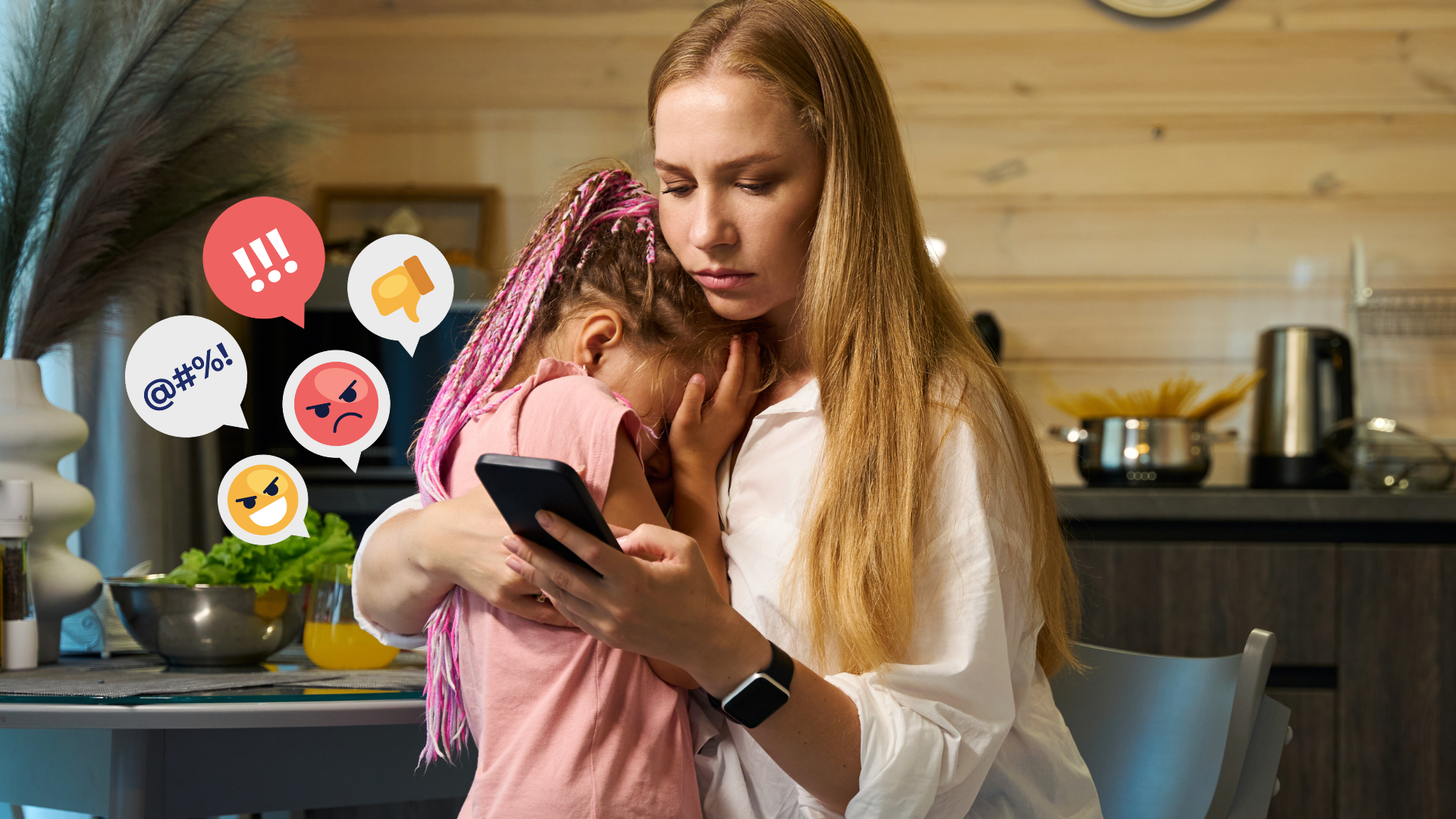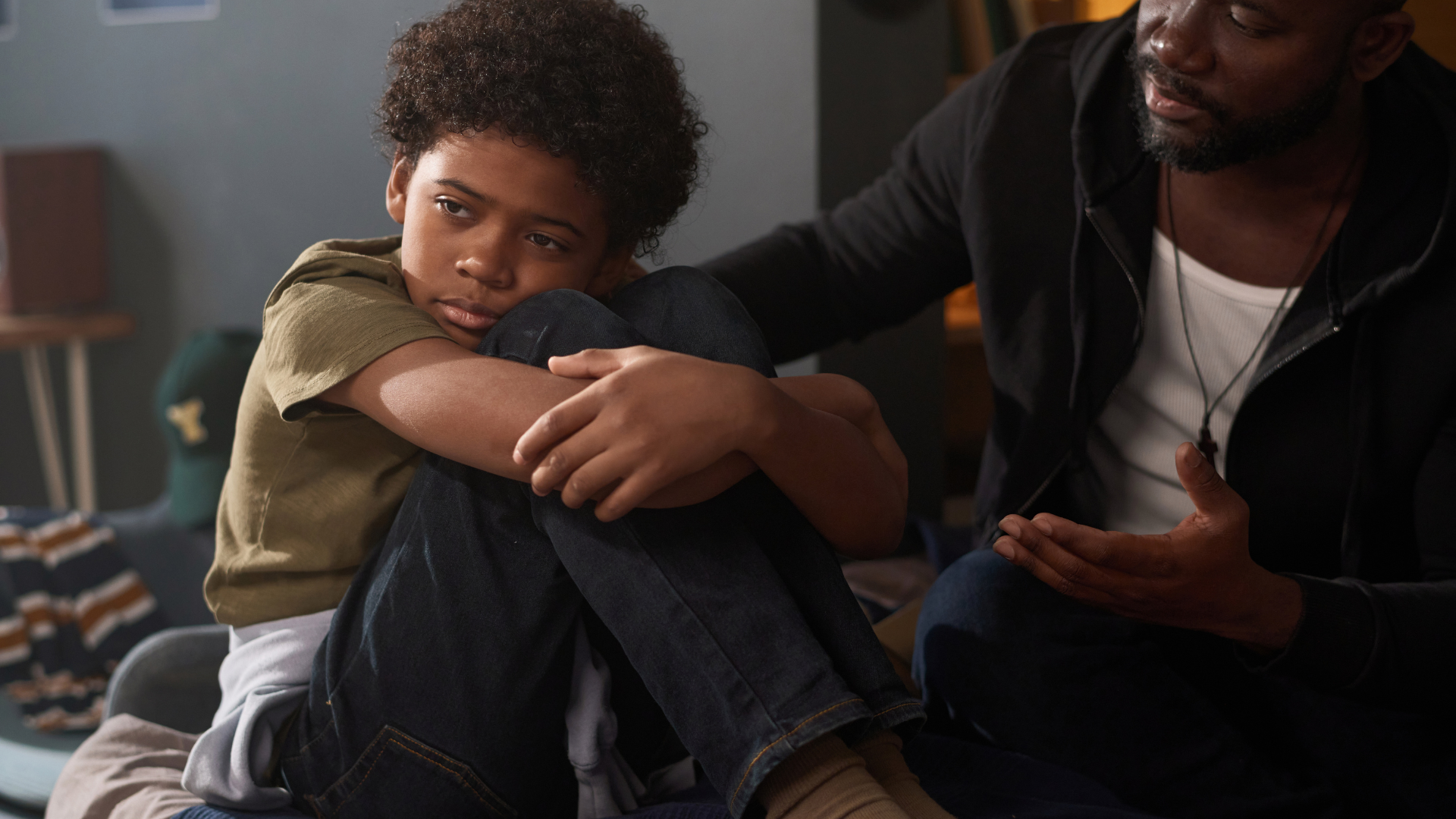- Digital parenting requires guiding children’s tech use with clear boundaries, open dialogue, and role-modeling responsible behavior.
- Family resilience online grows through shared rules, emotional support, and collective problem-solving when digital conflicts arise.
- Online safety depends on privacy education and teaching kids to recognize and report cyber risks.
Parenting today feels vastly different from when we were children. Back then, we never had to navigate social media, group chats, or the constant buzz of notifications. Now, our children’s friendships and conflicts spill far beyond the classroom walls, making it harder to recognize when something is wrong. Unlike traditional bullying, cyberbullying often intrudes into their private spaces, creating a sense that it is inescapable.
Because of this, schools and families need one another. Teachers witness the group dynamics that can spark online conflicts, while parents notice the emotional and behavioral changes at home. Neither side has the full picture on its own. When both connect and share what they see, children benefit from a clearer and more compassionate response.

Partnership also gives children consistency. Guidance feels stronger when it is reinforced across different environments. At school, children hear messages about respect and empathy. At home, they see those values practiced in daily life. When these align:
- Children feel supported rather than singled out
- Parents and teachers build trust with one another
- The child’s sense of safety grows both online and offline
- Children learn and practice respectful behavior by watching their role models
Preventing cyberbullying in schools is not about blame or punishment. It is about creating a respectful partnership between parents and teachers who care deeply about a child’s well-being and future.
What cyberbullying looks like today
Cyberbullying can appear as cruel comments, exclusion, or embarrassing posts. Unlike traditional bullying, it follows children home, leaving them feeling trapped and unable to escape.
Some of the most common situations children face include:
- Hurtful comments or rumors spreading in group chats
- Being excluded from games or social platforms where friends are active
- Embarrassing photos or videos shared to humiliate them
- Silent treatment online, such as being ignored in a chat or unfriended without explanation
For children, these experiences can feel constant. The phone or laptop that once connected them to friends can quickly become a source of fear and anxiety.
Why the school environment matters
Although cyberbullying occurs online, it often begins at school classroom conflicts and peer pressures spill into digital spaces, where they intensify and rapidly escalate into group attacks targeting one child.
Schools play a critical role here because they shape the culture that influences how children treat one another. Teachers and staff set the tone through classroom practices, supervision, and the values they reinforce. When respect and empathy are woven into daily school life:
- Students are less likely to carry hurtful behavior into online spaces
- Children learn that kindness is valued both offline and online
- Conflicts are more likely to be addressed early, before they spread digitally
- An inclusive classroom culture is established where students can feel safe
By understanding that school culture and online life are closely connected, parents can see why working alongside teachers is so essential. The school environment not only influences children’s learning but also their digital interactions, friendships, and sense of safety.
The parents’ role in preventing cyberbullying
Creating space for open conversations
Children are more likely to share their struggles when they know their parents are open to listening. Trust is built gradually through small, everyday exchanges. Asking about a child’s online experiences in a gentle way can make difficult topics less intimidating.
Instead of waiting for a crisis, parents can create safety by:
- Making digital life a regular topic at home, such as during meals
- Showing curiosity rather than judgment when children talk about online interactions
- Responding calmly, even if the story makes them worried or upset
These practices help children see that their parents are allies who can be approached before problems spiral out of control.
Modeling respectful digital behavior at home
Children closely observe how adults behave in stressful situations. They notice the tone of online messages, how disagreements are handled, and whether empathy is shown. If a parent reacts to conflict with anger or sarcasm, children may learn that harshness is normal.
On the other hand, parents who demonstrate respect even when they are frustrated teach a different lesson. For example, calmly explaining how they dealt with a difficult work email shows children that:
- Conflict can be resolved without cruelty
- Respect is possible even in tense moments
- Empathy matters both offline and online
This type of modeling shapes how children approach their own digital interactions.
Responding with empathy rather than control
When cyberbullying happens, parents often feel the urge to take away devices immediately. While this may seem protective, it can unintentionally silence children or cut them off from supportive friendships. A more effective approach focuses on connection before action.
Parents can support their child by:
- Listening fully before offering solutions
- Reassuring them that they are not to blame for what happened
- Asking thoughtful questions to understand the details
- Deciding together on safe and respectful next steps
This kind of response strengthens trust. It communicates that parents are not looking to punish but to walk alongside their children as they navigate challenges.
The teacher and school’s role in prevention
Establishing safe and inclusive classroom norms
Teachers set the tone for how children treat one another. By modeling kindness, addressing exclusion promptly, and fostering collaboration, they establish respect as the norm. Even small steps like reshaping a group project so every child participates sends a clear message that inclusion matters.
When this approach is consistent, children begin to internalize the idea that:
- Everyone deserves to be treated with dignity
- Exclusion and cruelty are not tolerated in the classroom
- Respect offline should extend into online interactions
The classroom becomes more than a learning space. It becomes a model for the values children carry into digital spaces.
Embedding digital citizenship into everyday learning
Prevention is most effective when it is part of daily routines rather than a one-time lesson. Schools that integrate digital respect into everyday learning give children the chance to reflect on their behavior regularly. For example, a class discussion about online comments can prompt students to rethink how they interact on social media.
When digital citizenship becomes part of classroom culture:
- Empathy is treated as a skill to be practiced
- Students are reminded that words online carry weight
- Respect is reinforced by both peers and adults
This steady reinforcement helps children understand that online behavior is not separate from how they are expected to act in person.
Supporting teachers with resources and training
Teachers are often the first to notice when social dynamics shift, but many feel unprepared to manage conflicts that spill into digital life. Providing training and resources equips them to identify warning signs and respond with confidence.
Schools that invest in these supports often use strategies like:
- Peer mentoring programs that encourage older students to guide younger ones
- Restorative circles that help children reflect and repair relationships
- Professional development that gives teachers practical tools for addressing online conflict
With the right preparation, teachers can move beyond simply reacting to problems. They can become proactive guides, helping students learn healthier ways to relate to one another both in person and online.
Building true parent–teacher partnerships
Effective prevention depends on consistent communication between parents and teachers. When each side shares what they notice, small problems can be addressed before they escalate. For example:
- A parent might notice their child becoming withdrawn at home
- A teacher may observe changes in group dynamics at school
- Together, they can connect the dots and respond quickly
When incidents do occur, collaboration matters. Blame only pushes people apart, while shared problem-solving keeps the focus on supporting children. A parent and teacher working together to mediate between two students in conflict can transform a damaging situation into a learning experience.

Consistency also empowers children. Hearing the same guidance about respect and responsibility from both parents and teachers reassures them that they are supported by a united community. This unity strengthens children’s trust and reduces feelings of isolation.
Strengthening schoolwide prevention programs
What effective programs look like
Prevention works best when schools approach it as a community effort rather than a single policy. Whole-school programs encourage students, teachers, and parents to share responsibility for building respectful spaces. These initiatives often combine education, peer involvement, and cultural change.
Some common approaches include:
- Digital citizenship weeks that highlight respectful online behavior
- Empathy workshops that allow students to practice perspective-taking
- Peer mentoring programs that empower older students to guide younger ones
These efforts help reshape the culture of the school. When respect and empathy become part of the daily rhythm, students are less likely to engage in or tolerate harmful online behavior.
Involving parents in school initiatives
Programs are most successful when they extend beyond the school walls. Parents who are invited to workshops or information sessions learn the same language and strategies that children hear in class. This creates continuity between home and school, which makes the lessons more powerful.
For example, a school that runs a digital citizenship assembly for students while hosting a parent evening on online safety ensures that both groups are aligned. Families leave with tools to reinforce at home what children are practicing in school.
Moving beyond punishment toward restoration
Many schools still rely on suspensions or expulsions as a way to stop bullying. While these measures may bring temporary relief, they rarely address the deeper issues behind a child’s behavior. True prevention looks beyond punishment and focuses on helping children grow.
Restorative practices create space for accountability and repair. With guidance from teachers or counselors, children who cause harm can:
- Understand the impact of their actions on others
- Reflect on how their choices affect the community
- Take concrete steps to make amends and rebuild trust
This approach prevents future harm more effectively than punishment alone and aligns with values of empathy, respect, and growth that benefit the whole school community.
Building a respectful digital culture together
Encouraging children to be upstanders
Children are deeply influenced by their peers. When one student stands up against cruelty online, it can shift the tone of an entire group. Parents and teachers can nurture this by encouraging children to use their voices when they see harm.
Practical ways to help children practice this include:
- Talking through examples of how to respond when a friend is targeted
- Highlighting stories of students who chose to support a peer instead of staying silent
- Reinforcing the idea that even small acts of support can make a big difference
When children learn they have the power to protect others, they become more confident in shaping a culture of respect.
Modeling digital respect as adults
Children often learn how to behave online by watching the adults around them. The tone parents use in community forums or the way teachers communicate in emails shows children that respectful digital spaces are possible.
Parents and teachers can model this by:
- Choosing kindness when posting in parent or school groups
- Demonstrating patience in communication, even during disagreements
- Celebrating examples of positive online communication in front of children
These small, everyday actions teach children that digital respect is not abstract but part of ordinary life.
Sustaining growth over time
Cyberbullying prevention is not a one-time effort. Children’s social worlds shift quickly, and new platforms change the way they interact. Parents and teachers who remain open to learning and adapting stay better equipped to guide children through those changes.
Sustaining growth means:
- Revisiting conversations about online respect regularly
- Adjusting family and classroom approaches as new challenges appear
- Encouraging children to reflect on how they can evolve in their own digital behavior
With this ongoing effort, respect becomes not just a rule but a habit that grows with children as they move through different stages of life.
Moving forward together
Preventing cyberbullying in schools is possible when parents and teachers unite. Together, they create an environment where respect and empathy are consistent across home and school. Children thrive when the adults in their lives share responsibility and communicate openly.
The first step does not need to be big. A parent reaching out to a teacher to check in, not just when problems arise, builds the foundation for trust. When schools and families work side by side, children gain the safety and confidence they need to grow both online and offline.
Frequently asked questions
Why are parent–teacher partnerships important in preventing cyberbullying?
- Shared perspective: Parents see emotional changes at home, while teachers observe peer dynamics at school. Together, they create a fuller picture of what children are experiencing.
- Consistency for children: When home and school send the same message about respect and empathy, children feel more supported and less confused.
- Early intervention: Open communication between parents and teachers helps identify problems sooner, before they escalate online.
- Stronger solutions: Collaboration allows adults to respond in ways that guide, protect, and teach children, rather than relying only on punishment.
What role do teachers play in fostering respectful online behavior?
Teachers shape the tone of the classroom. By modeling kindness, addressing exclusion, and integrating digital citizenship into lessons, they help students learn how respect extends online. Teachers also create safe reporting systems so children know they can ask for help without fear.
How can parents initiate conversations with teachers about cyberbullying?
Start with curiosity and openness rather than blame. A simple email or check-in can open the door:
- Share any changes you’ve noticed in your child’s behavior
- Ask if the teacher has observed similar dynamics at school
- Express your desire to work together for your child’s well-being
This sets a collaborative tone and strengthens the parent–teacher relationship.
What should parents do if their child is being cyberbullied?
- Stay calm and listen: Create a safe space for your child to share without fear of judgment or punishment.
- Reassure your child: Let them know they are not at fault and they are not alone in handling this.
- Document the evidence: Keeping a record of messages, posts, or screenshots allows parents to understand patterns and take informed steps to address the situation, following astructured approach to navigating cyberbullying that protects their well-being.
- Work with the school: Inform teachers or administrators so they can address the issue in the school environment.
- Support your child emotionally: Encourage healthy coping strategies, maintain open communication, and remind them of their strengths and worth.
What if my child is the one engaging in cyberbullying?
It can be painful to hear, but it is an opportunity to guide your child with empathy. Ask them why they acted as they did, and help them see the impact of their behavior. Encourage accountability and restorative actions, such as apologizing or making amends, while reinforcing respect at home.
How can parents and teachers model healthy digital behavior for children?
Children notice how adults behave online. Parents and teachers can:
- Communicate respectfully in emails and group forums
- Avoid gossiping or negative comments online
- Share positive digital interactions with children as examples
These small actions show children that online spaces can be used responsibly and kindly.





